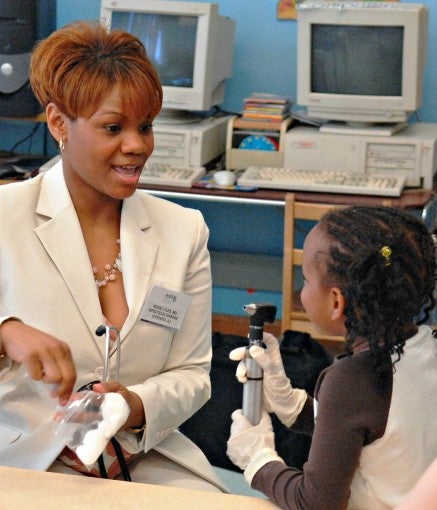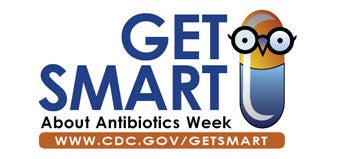Clorox Healthcare is Supporting Get Smart About Antibiotics Week – You Can Too
By Rosie Lyles, MD, MHA, MSc
Head of Clinical Affairs – Clorox Healthcare

Antibiotics are meant to help treat or prevent bacterial infections, but their effectiveness is diminished when they are used incorrectly. In fact, inappropriate antibiotic use is estimated to account for 20 to 50 percent of all antibiotic use.1 “Inappropriate” use can mean either:
- The use of antibiotics when no health benefit is possible, such as to treat upper respiratory tract infections caused by viruses; or
- The suboptimal use of antibiotics for responsive conditions, such as the choice of drugs with an unnecessarily broad spectrum, an incorrect dosage or duration or poor patient adherence to the prescribed treatment.2
An estimated 80 percent of all antibiotics are used in the community outside of hospitals, meaning in outpatient settings such as clinics, health posts and private physicians’ offices.3 In hospitals, even when a specific pathogen is identified, many patients are still given broad-spectrum antibiotics. Because these drugs are effective against a wide range of pathogens, they may contribute to the spread of resistant strains of many non-target organisms. In a two-year study with six hospitals, only 59 percent of patients received appropriate clinical cultures and were placed on antibiotic therapy. However, by the fifth day of therapy, 66 percent of antibiotic therapy regiments remained unchanged, even though 58 percent of patients had a negative clinical culture, indicating that antibiotic therapies should stop.4
Supporting the Campaign to Reduce Inappropriate Antibiotic Use
 The first step to reducing the inappropriate use of antibiotics is making healthcare professionals and patients aware about antibiotic resistance to help correct bad behaviors such as antibiotic overuse and overprescribing. The Centers for Disease Control and Prevention’s Get Smart About Antibiotics Week (Get Smart Week) kicks off today and it is an annual observance intended to engage relevant industry stakeholders, state and local health departments and the general public around antibiotic stewardship in the outpatient, inpatient and animal health settings.
The first step to reducing the inappropriate use of antibiotics is making healthcare professionals and patients aware about antibiotic resistance to help correct bad behaviors such as antibiotic overuse and overprescribing. The Centers for Disease Control and Prevention’s Get Smart About Antibiotics Week (Get Smart Week) kicks off today and it is an annual observance intended to engage relevant industry stakeholders, state and local health departments and the general public around antibiotic stewardship in the outpatient, inpatient and animal health settings.
This year, Get Smart Week (Nov. 16 – 22) coincides with the European Union’s Antibiotic Awareness Day (Nov. 18) and the World Health Organization’s first World Antibiotic Awareness Week. Other countries and international organizations are also participating in antibiotic awareness activities during this week, including Canada, Australia and the Pan American Health Organization (PAHO). As antibiotic stewardship is a global issue, these partners are critical to spreading the word about improving antibiotic use and preventing antibiotic-resistant infections.
Please join me and Clorox Healthcare in spreading the word about Get Smart Week. For more ideas about what you can do to raise awareness in your own local community, visit www.cdc.gov/getsmart.
References
1Cizman, M. The Use and Resistance to Antibiotics in the Community. 2003. International Journal of Antimicrobial Agents, 21(4):297-307.
2Starrels, J. L., Barg, F. K., and Metlay, J. P. 2009. Patterns and Determinants of Inappropriate Antibiotic Use in Injection Drug Users. Journal of General Internal Medicine, 24(2):263-9. doi:10.1007/s11606-008-0859-7
3Kotwani, A., and Holloway, K. 2011. Trends in Antibiotic Use Among Outpatients in New Delhi, India. BMC Infectious Diseases, 11(1):99. doi:10.1186/1471-2334-11-99.
4Braykov, N. P., Morgan, D. J., Schweizer, M. L., Uslan, D. Z., Kelesidis, T., Weisenberg, S. A., et al. 2014. Assessment of Empirical Antibiotic Therapy Optimisation in Six Hospitals: An Observational Cohort Study. The Lancet Infectious Diseases, 14(12):1220–1227.




